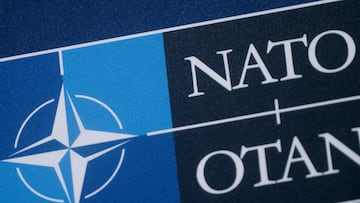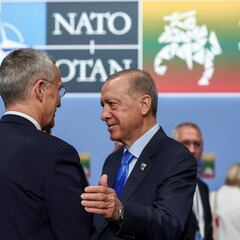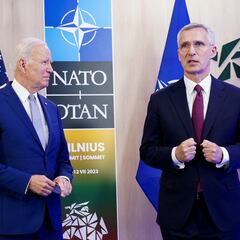What does NATO stand for and what is its purpose?
President Joe Biden is hosting NATO leaders who have gathered in Washington, D.C. this week on the 75th anniversary of the military alliance.


NATO leaders are arriving in Washington D.C. for a summit that marks the 75th anniversary of the organization.
The conference is expected to focus on shoring up support for Ukraine in the war that Russia waged against the country, as well as China’s aggressive movements in the Asia-Pacific.
Aside from pressing international matters, the public’s eyes will also focus on host President Joe Biden, whose performance in the gathering would be an indication of his capability to lead the country. Another poorly perceived showing on such a stage will result in an even louder clamor to replace him with another candidate.
READ ALSO: Parkinson’s specialist examined Biden in annual physical
Now in Washington. Today marks the beginning of the NATO Summit.
— Volodymyr Zelenskyy / Володимир Зеленський (@ZelenskyyUa) July 9, 2024
We are fighting for more air defense systems for Ukraine, and I’m confident we will succeed. We are also striving to secure more aircraft, including F-16s. Additionally, we are pushing for enhanced security… pic.twitter.com/ydkHQjK6RL
What does NATO stand for and what is its purpose?
The North Atlantic Treaty Organization or NATO came into being in 1949, four years after the end of the Second World War, with the signing of the North Atlantic Treaty in Washington D.C. NATO is an intergovernmental military alliance formed by several countries from North America and Europe. The stated purpose of NATO is to promote peace and security among its member states through collective defense and cooperation.
Signatories to the treaty promised to “safeguard the freedom, common heritage and civilization of the peoples, founded on the principles of democracy, individual liberty and the rule of law.” The treaty came in the aftermath of WWII, with a potential Soviet attack on Western powers in mind.
Twelve countries signed the agreement: Belgium (where NATO is now headquartered), Canada, Denmark, France, Iceland, Italy, Luxembourg, the Netherlands, Norway, Portugal, the UK and the US. As such, these are now considered the founding nations of NATO.
READ ALSO: Which European countries are not part of NATO?
How many countries are NATO members?
NATO membership now stands at 32 states, the most recent of which was Sweden, which became a member in February of this year. The bulk of the alliance is made up of European Union member states, with Turkey, which, courtesy of the Montreux Convention of 1936, controls the Black Sea and therefore the Russian Navy’s access to the high seas through the Dardanelles and Bosphorus straits.
NATO is a collective security defensive alliance, with all member states duty-bound to come to the defense of any member state whose “territorial integrity, political independence, or security” is threatened.”
Related stories
This was the case in Russia’s invasion of Ukraine, when NATO immediately moved to strengthen its eastern flank. The organization sent alliance troops to member states bordering Russia (Bulgaria, the Czech Republic, Estonia, Latvia, Lithuania, Poland, Romania, and Slovakia) in a move described by NATO Secretary-General Jens Stoltenberg as enabling NATO “to deploy capabilities and forces, including the NATO Response Force [which consists of land, air, sea and special operations forces].”
READ ALSO: The differences between NATO, the UN and the EU
Here is the list of NATO member countries.
- Albania 2009
- Belgium 1949
- Bulgaria 2004
- Canada 1949
- Croatia 2009
- Czechia 1999
- Denmark 1949
- Estonia 2004
- Finland 2023
- France 1949
- Germany 1955
- Greece 1952
- Hungary 1999
- Iceland 1949
- Italy 1949
- Latvia 2004
- Lithuania 2004
- Luxembourg 1949
- Montenegro 2017
- Netherlands 1949
- North Macedonia 2020
- Norway 1949
- Poland 1999
- Portugal 1949
- Romania 2004
- Slovakia 2004
- Slovenia 2004
- Spain 1982
- Sweden 2024
- Türkiye 1952
- United Kingdom 1949
- United States 1949


Complete your personal details to comment